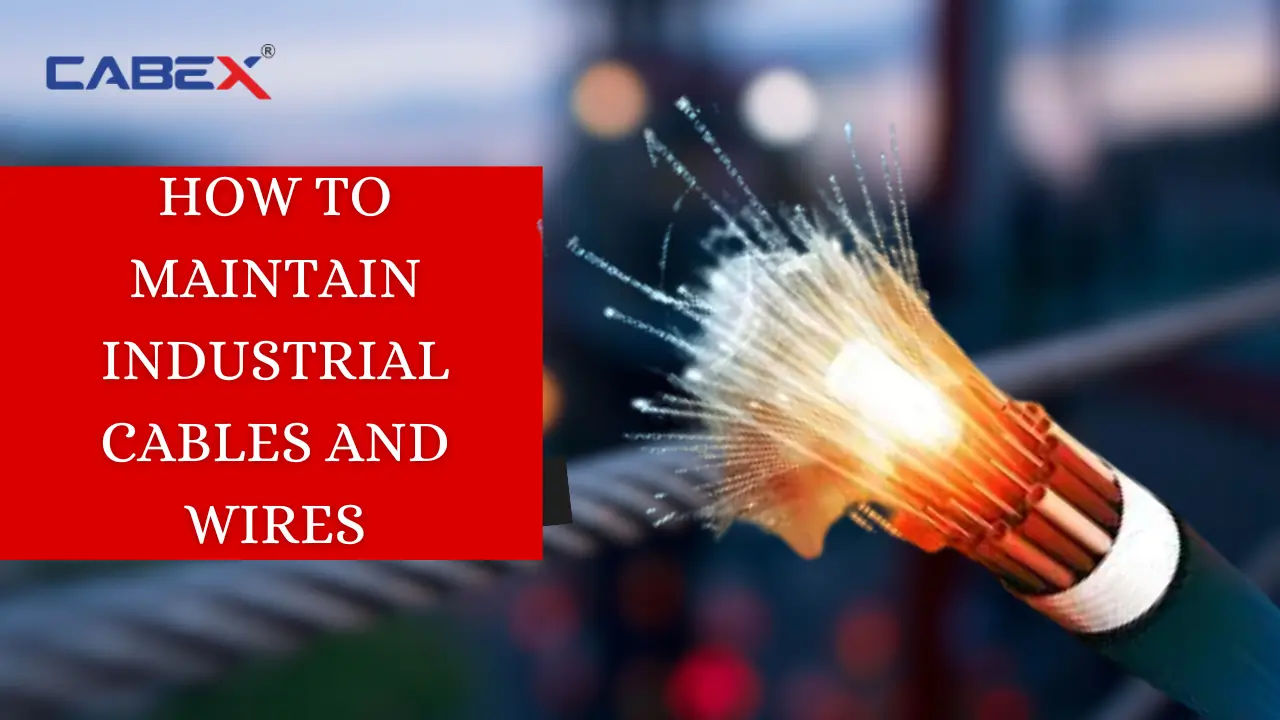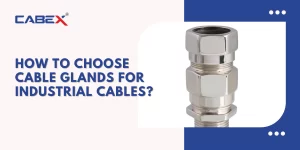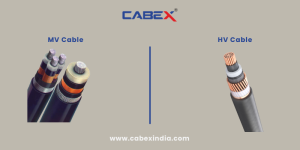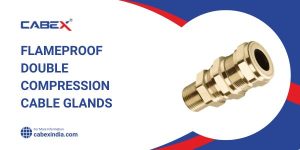Maintain Industrial Cables and Wires
Industrial cables and wires are key elements in any manufacturing or industrial setup, as they play a pivotal role in operating machinery and equipment for optimal operation in factories or manufacturing plants.
Maintain industrial cables and wires is an integral component of safe and efficient machine and equipment operation. Here we offer some tips on how to best care for these wires to extend their lifespan and avoid unexpected downtime.
Why is it Important to Manage Cables?
Cable maintenance is crucial for several reasons. Primarily, it ensures employee and equipment safety and protection; improperly maintained cables may lead to electrocution, fires, or equipment failure that cause serious injuries and financial losses.
Regular cable maintenance can help prevent production delays and downtime, by enabling you to identify and address potential problems before they become major headaches that require downtime.
What Are Five Types of Wire Protection Devices?
Here are the Five Types of Wire Protection Devices:
1. Conduit
A conduit is a tube-like structure designed to protect wires from mechanical impact, moisture or other hazards. Conduits may be constructed out of metal or plastic material and be rigid or flexible depending on their use; they can be mounted to walls, ceilings or buried underground for installation purposes.
2. Cable Trays
Cable trays are structures designed to support and protect cables and wires. Usually made of metal, cable trays are widely used in industrial settings where large amounts of wiring need to be organized and safeguarded.
3. Wire Looms
Wire looms are flexible tubes designed to shield cables and wires from abrasion, vibrations, and other hazards. They’re usually constructed out of plastic material and come either split or non-split designs for maximum flexibility.
4. Heat shrink tubing:
Heat shrink tubing is a protective sleeve that shrinks around wires when heated, providing protection from moisture, abrasion and other hazards.
5. Braided Sleeving
Braided sleeving is a protective sleeve made of woven fibers that offers protection from abrasion, heat and other hazards. It can be constructed out of various materials like nylon, fiberglass and polyester and is typically utilized in high temperature applications.
Tips on Maintaining Industrial Cables and Wires
1. Regular Inspections
Regular Inspections It is critical that industrial cables and wires be regularly inspected to detect signs of damage or wear and tear, conducted by a qualified technician and including visual inspections as well as tests for continuity, insulation resistance and voltage.
2. Cleanliness
Cleanliness Dust, debris and corrosion damage can accumulate on industrial cables and wires over time, leading to insulation breakdown and corrosion. Regular cleaning with soft cloth or brush cleaning agents is recommended as this will protect the insulation. Abrasive cleaners could do further damage.
3. Protection
Industrial cables and wires can be exposed to harsh environmental conditions that can damage them. Protecting them against mechanical damage, moisture build-up and extreme temperatures is crucial in order to avoid premature failure and prolong their lives. Flexible conduit fittings or industrial cable glands may provide extra protection that extends their lives further.
4. Correct Installation
Correct installation is vital to protecting industrial cables and wires against damage and prolonging their longevity. Cables should be installed according to manufacturer recommendations and industry standards for optimal results, while improper setup could put strain on them or lead to insulation breakdown and failure, possibly even leading to fatal consequences.
5. Repairs and Replacements
Industrial cables that have become damaged should be quickly repaired or replaced before equipment failure and safety risks ensue. Repairs must be conducted by qualified technicians for optimal safety and performance of equipment.
How do you Store Industrial Cables?
Proper storage of industrial cables is crucial to ensure their longevity and avoid damage or tangling. Here are some general tips that will assist you with this endeavor:
1. Select an ideal storage area: An ideal storage environment should be free from moisture and humidity to minimize corrosion and mold growth, be dust- and debris-free, and have cool conditions to reduce heat damage to cables.
2. Avoid direct sunlight: Industrial cables must be stored out of direct sunlight as UV radiation exposure can damage their insulation and compromise their performance over time.
3. Wind Your Cables Correctly: Proper coiling of cables is crucial to prevent tangling and damage to them. Starting at one end of the cable, use cable ties or Velcro straps to coil them loosely before tightening with cable ties – too tightening can damage cables!
4. Label the cables: To easily identify cables when needed, labelling is key for quick identification. Utilize tags or labels with information regarding type, length and any relevant details about them.
5. Utilize cable racks or reels: Cable racks or reels can be an invaluable way to organize and store industrial cables safely off of the floor and away from potential hazards.
By following these tips, you can ensure your industrial cables are stored safely and can be reached when needed.
How Can We Avoid Cable Failure?
Preventing cable failure requires taking several actions, some of which include:
1. Proper Installation
The key to preventing cable failure lies in its installation, so make sure it follows manufacturer recommendations for installation and ensure its bend radius does not go beyond its minimum bend radius and it is not subject to excess tension or compression.
2. Conduct Regular Inspects
Scheduling regular inspections can help detect signs of wear and tear before they become major issues. Look out for cracks, cuts, abrasions or corrosion and act swiftly when necessary – replacing damaged cables as soon as possible.
3. Cable Protection
Cable protection systems such as cable trays, ducts or conduit can help shield cables against external factors like moisture ingress, impacts or abrasion.
4. Cable Selection
Selecting the appropriate cable for any application is key to its success. Take into account variables like temperature, voltage, current and environmental conditions when choosing your cable to ensure its properties align with those needed for your use case.
5. Perform Regular Maintenance
Regular maintenance can help protect cables against failure by cleaning them, tightening connections, and making sure that there is no strain or tension placed upon them.
Conclusion
Maintaining industrial cables and wires is critical to the safe and efficient running of manufacturing and industrial operations. Regular inspections, cleanliness checks, protection measures, correct installation procedures and repairs/replacements as soon as necessary can ensure long-term use as well as reduce downtime and safety hazards.
Flexible conduit fittings and industrial cable glands are essential components for protecting cables and wires from mechanical damage and harsh environmental conditions. By following these tips, you can protect the safety and efficiency of your industrial cables and wires while ensuring maximum equipment efficiency.
Few Frequently asked questions that people generally ask:
Q. How do you safeguard wires and cables?
You can safeguard wires and cables by using cable protectors, cable ties, conduit pipes, wire ducts, or cable trays. Proper installation and maintenance also help prevent damage.
Q. What is the main protection of cables?
Insulation serves as the cornerstone of cable protection, protecting its internal wires against external elements that might lead to electrical leakage, short circuiting or wire damage.
Q. What are the main reasons for cable failure?
Cable failure may occur as a result of mechanical damage, corrosion, electrical faults, overheating, excessive heating or aging; additional environmental factors like temperature and moisture levels can also play a part.
Q. What are types of cable defects?
These defects include insulation damage, connector issues, corrosion damage, cable crush damage and conductor damage which may lead to signal loss, electrical failures or safety risks.
Q. How do you stop wires from overheating?
To prevent overheating of wires, choose wires with appropriate gauge and insulation rating, avoid overloading circuits, keep away from sources of heat such as radiators or space heaters and use cooling devices like fans or heat sinks as cooling solutions; regularly inspect for and replace damaged wires.
Read Also: Difference Between Cable Gland and Cable Termination






